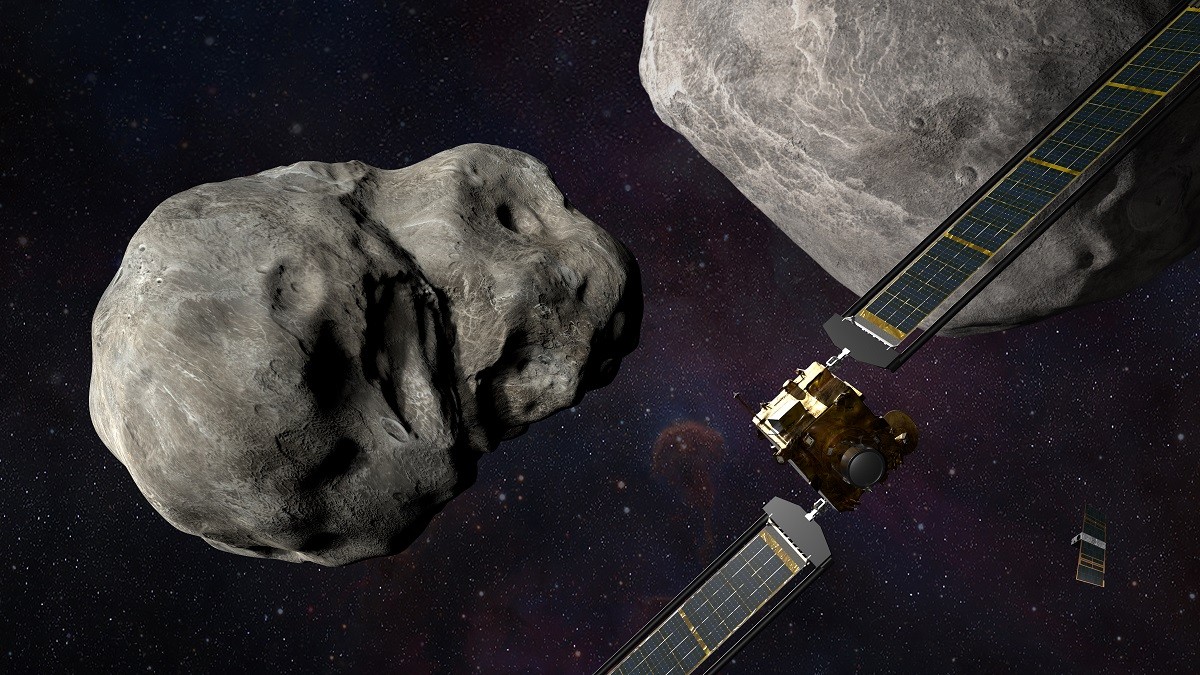NASA successfully made impact with asteroid in redirection test [Video]

WHAT YOU NEED TO KNOW:
- As part of NASA’s Double Asteroid Redirection Test (DART), a satellite deliberately crashed into an asteroid moonlet in an attempt to change its trajectory.
- The mission was part of an experiment to determine whether such a collision can deflect potential asteroids that could impact Earth.
- Since an asteroid impact can cause significant damage, NASA is working on strategies like this for planetary defense.
NASA’s first Double Asteroid Redirection Test (DART) led to a successful impact with a small, non-threatening asteroid on Monday. The first-of-its-kind mission was part of an experiment that looks into whether a deliberate collision can redirect a space object’s trajectory away, allowing for a viable strategy for planetary defense against asteroid impact.
NASA administrator Bill Nelson stated, “We are showing that planetary defense is a global endeavor, and it is very possible to save our planet. I believe it is going to teach us how, one day, to protect our own planet from an incoming asteroid.”
It would be difficult to measure the impact’s effects on the orbit of a single asteroid around the sun. So, scientists decided to try and change the orbit of a smaller asteroid moonlet, called Dimorphos, around a larger asteroid, Didymos. Neither posed an immediate threat to Earth.
The pair, which are roughly 6.8 million miles (11 million kilometers) away, can still be viewed through Earth-based telescopes.
Dimorphos’ orbit was calculated through measured variations in brightness from the moonlet as it orbited around Didymos from Earth’s viewpoint.
Post-impact, NASA and astronomers from the Johns Hopkins University Applied Physics Laboratory will compare Dimorphos’ new orbit to its pre-impact orbit to determine the scale of deflection.
DART, which is the size of a vending machine, weighs about 1,260 pounds (571.5 kilograms). After launching last year, it was autonomously steered into Dimorphos, which is about 525 feet (160 meters) in diameter. DART was traveling at about 14,000 miles per hour (22,530 kilometers per hour) when it struck Dimorphos.
Scientists estimated an impact crater on the asteroid and a blast of between 22,000 and 220,000 pounds (between 9,979 and 99,790 kilograms) of surface material into space.
LICIACube, a miniature spacecraft produced by Italy, will fly past Dimorphos about three minutes post-impact to collect images of the aftermath. Several telescopes, including the Hubble and James Webb, were also focused on the system for observation.
It was estimated beforehand that the collision would alter Dimorphos’ orbit around Didymos by several minutes. Still, the Didymos system has to be observed for weeks before the team can make a precise calculation of the changes.
An even more precise understanding of the deflection will be given after the European Space Agency’s Hera spacecraft conducts a survey of Dimorphos in 2026.
NASA assured everyone that there are no known asteroids that are on a collision course with Earth. The agency added that asteroid strikes are also extremely rare. Still, an impact can cause significant citywide or regional damage, which is why they are working on strategies for planetary defense.
Source: Axios
